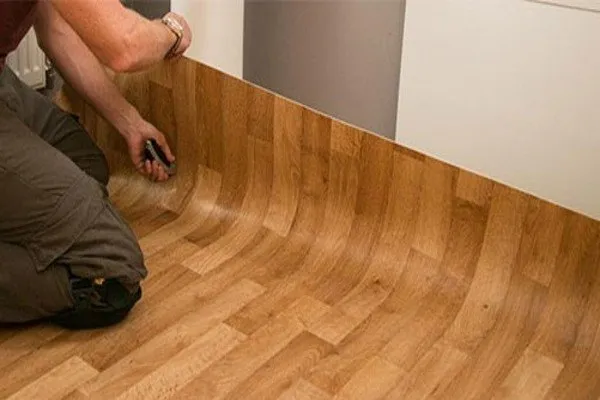Vinyl is no longer synonymous with low-cost, plastic-looking flooring that we associate with 1970s houses. The latest innovations have made vinyl or PVC flooring an alternative to laminate flooring.
The origin of vinyl floors is in the 50s, although it is not until the 70’s that they reach maturity. Although in its roots it was low-cost flooring, this type has evolved a great deal since then in terms of format, resistance, properties and, above all, aesthetics.
WHAT IS VINYL OR PVC FLOORING?
It is a very versatile and easy-to-install type of plastic cladding. This flooring is made from polyvinyl chloride, better known by its abbreviation PVC. As with laminate flooring, vinyl flooring consists, with some variation from manufacturer to manufacturer, of a core, a decorative printed vinyl layer and a high-performance protective top layer. Their thickness usually ranges between 5 and 7 mm, making them an ideal option for renovations.
There are two types of vinyl flooring: flexible, which are the most traditional, and rigid, which are the new generation.
FLEXIBLE VINYL FLOORING
Depending on the installation system, we must differentiate between:
Glued vinyl flooring: This is the most basic and economical way in which we can buy vinyl flooring. They are sold in rolls several meters long and wide. It is ideal for large rooms where little or no adjustment or cutting is required. The main handicap they present is that they need a level and smooth floor for their installation.
Click system vinyl flooring: “It is the most common option today for domestic use. Its installation system is the same as that of a laminate floor, so with a little skill, you can install it yourself. Although you can install it on the previous floor, being an ideal option for renovations; if the old floor tiles have extensive joints, the floor must be levelled beforehand. Otherwise, once installed, the joints would be marked”, says José García.
RIGID VINYL FLOORING
They are the new generation of vinyl floors. They are placed in floating installation (without sticking to the slab) and, with click-type anchoring between pieces, just like traditional laminate floors. This allows quick installation – “for a flat of about 100 m 2 without furniture, it is ready in about 2-3 days” – and it is relatively easy to replace a damaged part. “Furthermore, they can be installed on a base that is not perfect, whether it is a concrete screed that does not have self-levelling or on another floor that has already been installed,” explains José.
PROS AND CONS OF VINYL FLOORING
When installing vinyl flooring at home, you must know its strengths and disadvantages. We will tell you about them with the advice of José García.
ADVANTAGES OF VINYL FLOORS
Moisture resistant: “This is one of its main advantages over laminate flooring. It is 100% moisture resistant, making it a good option for bathrooms.”
Noise reduction: “Vinyl flooring, especially flexible flooring due to its elasticity, dampens the noise of footsteps and provides a comfortable and quiet experience when walking on them.”
Impact resistance: “It can absorb shocks, especially the flexible ones, so it protects the floor from possible blows”.
Pleasant to the touch: “Unlike a laminate floor, which is cold to the touch, a vinyl floor, due to its very composition, is soft and warm to the touch.”
Hygienic: The sealed surface prevents the formation of bacteria, and, in addition, they are non-slip.
Easy to maintain: Wipe with a slightly damp cloth or cloth. However, there are specific products for this type of soil.
Variety of designs: As with laminate flooring, they can imitate any material: from stone or concrete to wood or iron. With the advantage that they are much cheaper than a wooden or natural stone floor.
DISADVANTAGES OF VINYL FLOORS
Low hardness: Compared to other materials, vinyl floors require more care. They are likely to be damaged by sharp, rough or hot objects.
Sensitive to heat: “They do not tolerate heat well. They can deform when the temperature exceeds 45 ºC,” says José García.
They can discolour: Related to the above, sunlight can injure them, especially if they are exposed to direct and excessive sunlight.
Price: “Compared to laminates, a quality vinyl floor is even more expensive. It can cost from €39/m2, installed.”
Other vinyl siding options that are very fashionable are vinyl tile and adhesive tiles.


